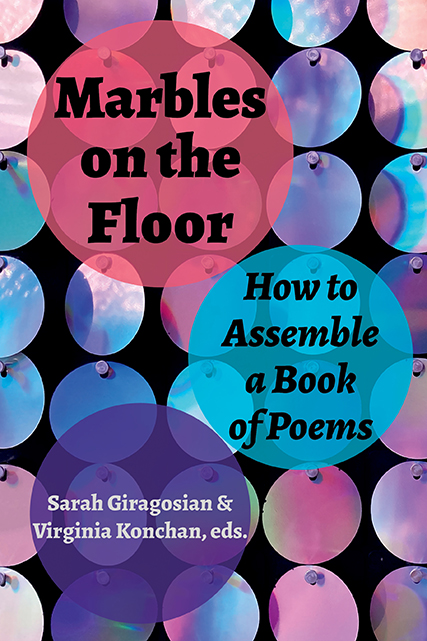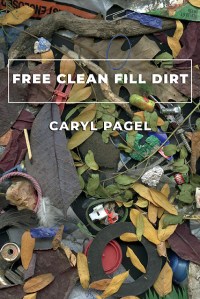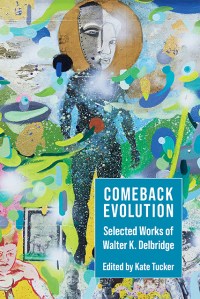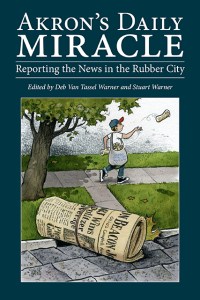Description
Marbles on the Floor: How to Assemble a Book of Poems was conceived from a poetic dialogue on how to shed light on the art and science behind the material construction of a poetry collection. This anthology of interconnected essays (craft, lyric, and critical) explores the art and technique of poetry manuscript assembly as articulated by poets in all stages of their careers. A timely, invaluable, and compact resource for creative writing teachers, as well as emerging and established poets honing their craft, writers in other genres (fiction and non-) will also benefit from this widely applicable yet nuanced discussion of how to bring a book into being.
About the editors
Sarah Giragosian is the author of the poetry collection Queer Fish, a winner of the American Poetry Journal Book Prize (Dream Horse Press, 2017) and The Death Spiral (Black Lawrence Press, 2020). Sarah’s writing has appeared in such journals as Orion, Ecotone, The Missouri Review, Tin House, and Prairie Schooner, among others. She teaches at the University at Albany-SUNY.
Virginia Konchan is the author of the poetry collections Bel Canto (Carnegie Mellon, 2022), Hallelujah Time (Véhicule Press, 2021), Any God Will Do, and The End of Spectacle (Carnegie Mellon, 2020 and 2018), a short story collection, Anatomical Gift (Noctuary Press, 2017), and four chapbooks. Her work has appeared in The New Yorker, The New Republic, The Yale Review, Boston Review, and The Believer.
Praise for Marbles on the Floor
If I teach graduate or undergraduate creative writing again, I will assign this book. The introduction and discussion questions provide a helpful study guide, and the wonderfully various essays offer something for every intellectual bent and poetic style: those who want theory or practice; to make their own rules; intuitive and logical thinkers; poets seeking fellowship and comfort in the assembly challenge; poets seeking masterful nuts and bolts advice to make their manuscript publication-ready—this collection includes approaches for all.
—April Ossmann (independent editor and author of Event Boundaries)
What happens when a stack of poems becomes a book? In Marbles on the Floor, twelve acclaimed poets respond, offering insight on their personal and critical approaches to arranging a book of poems. As H. L. Hix writes, for readers of these essays, “the benefit is clarity” about a behind-the-scenes process. The writers generously make themselves the subjects of study as they describe their movement from generating poems to the fine detail work of cultivating a collection. The essays here test metaphorical lenses from bonsai care to bookshelf assembly as they describe the process of building a book. However, they also give plenty of practical advice about the oddities of what exactly to do with your poems, from spreading them across the floor to asking them, “How are you today?” (Chang). These poets approach the art of order as one of productive multiplicity, guided by experimentation and play as relationships within each manuscript become visible. No one here will tell you what a poetry book must be, only what it can.
Just as these essays argue that the book must be more than a sum of its parts, this anthology, too, is more than its individual essays. You’ll find here the esprit de corps of poetry book arrangers, a call to joy and rebellion in this part of our vocation. This anthology is as much about how to be a person who risks making a collection as it is about how to order poems. No matter one’s thoughts about generation, order, or even what a poetry “book” intends to make happen, these essays are full of empathy and good advice.
—Kate Partridge, author of Thine and Ends of the Earth
If you want to know how the sausage gets made, this book is for you. These vibrant essays about the making of poetry books don’t reveal secret spices or gross ingredients, but they do offer candid observations, illuminating anecdotes, and the capacious wisdom of long and varied experience. These writers’ eclectic pragmatism and intellectual rigor will have you taking notes, making lists of things to try, and laughing out loud. Whether you are inclined to use narrative or allergic to narrative, aspiring to create a book that achieves an arc or sparks a detonation, these essays inquire into craft principles beyond raw versus cooked, Dionysian versus Apollonian, standalone lyric versus orchestrated collection. The wisdoms here enable contrary principles and ambiguities to coexist, as Diane Seuss aptly explains, because “There is something to be said for a boundary. There is also something to be said for unbinding. Ask anyone who has ever worn a bra.” Throughout, rich analogies make craft principles gorgeously tangible: Victoria Chang on the care of bonsais, Diane Seuss on adolescent Emily Dickinson’s herbarium, Harvey Hix on assembling bookcases, Kazim Ali on public architecture, Karyna McGlynn on collage, among many others. Along the way, there are tips, touchstones, master classes, close readings, and crowd-sourced surveys from some of the best minds writing and thinking about poetry today. The critic Kenneth Burke once said that participating in literary life is like coming into a room where a heated conversation has been going on for a long time, and where no one present can retrace for you the steps that have come before: “You listen for a while, until you decide that you have caught the tenor of the argument; then you put in your oar.” This prismatic book of essays is a great place to catch the tenor of the argument, to find a launching place where you can push off and start paddling, and to sustain the energy to keep moving in the currents of creative life.
—B. K. Fischer, author of Ceive, Radioapocrypha, and My Lover’s Discourse, among other titles
Media
All the Marbles: An Interview with Sarah Giragosian and Virginia Konchan in JMWW
Mini review inside an essay by Zach Savich up at On the Seawall
Interview with Tiffany Troy and Virginia Konchan up at Tupelo Quarterly
Contributors
Restless Herd: Some Thoughts on Order Diane Seuss
Poems as Paintings: Life-Drawing in Words Heather Treseler
FAQ: from Press Authors, Graduate Students, and Editing Clients Christopher Salerno
The Body of the Poetry Manuscript: Patterning Your Collection with Structural Repetition Annie Finch
The Shapes of Books Stephen Kampa
Writing on the Wall: A Mystery Alyse Knorr
Some Assembly Required Harvey Hix
Leaping Between Seams: What Analog Collage Taught Me About Sequencing a Book of Poems Karyna McGlynn
Dreaming the Total Poem, Assembling the Counterarchive, Writing the Refuge Philip Metres
Dear Unexplainable Kazim Ali
Mystery and Legacy in Shaping a Manuscript Cyrus Cassells
Of Bonsais and Moons: An Epistolary on Making a Book of Poems Victoria Chang








